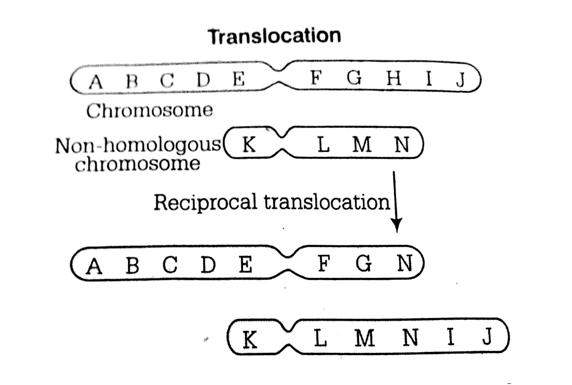 Multiple Choice Questions
Multiple Choice QuestionsThe movement of a gene from one linkage group to another is called
inversion
duplication
translocation
translocation
C.
translocation
The movement of a gene from one linkage group to another called translocation.
It is a chromosomal abnormality caused by rearrangement of part between non-homologous chromosomes.
The function of leghemoglobin in the root nodules of legumes is
oxygen removal
nodule differentiation
expression of nif gene
expression of nif gene
Carrier ions like Na+ facilitate the absorption of substance like
amino acids and glucose
glucose and fatty acids
fatty acids and glycerol
fatty acids and glycerol
The rupture and fractionation do not usually occur in the water column in vessel/tracheids during the ascent of sap because of
lignified thick walls
cohesion and adhesion
weak gravitational pull
weak gravitational pull
Passage cells are thin-walled cells found in
endodermis of roots facilitating rapid transport of water from cortex to pericycle
phloem elements that serve as entry points for substance for transport to other plant parts
testa of seeds to enable emergence of growing embryonic axis during seed germination
testa of seeds to enable emergence of growing embryonic axis during seed germination
Two cells A and B are contiguous. Cell A has osmotic pressure 10 atm, turgor pressure 7 atm and diffusion pressure deficit 3 atm. Cell B has osmotic pressure 8 atm, turgor pressure 3 atm and diffusion pressure deficit 5 atm. The result will be
Movement of water from cell B to A
No movement of water
Equilibrium between the two
Equilibrium between the two
The translocation of organic solutes in sieve tube members is supported by
root pressure and transpiration pull
P-proteins
mass flow involving a carrier and ATP
mass flow involving a carrier and ATP
Which of the following is made up of dead cells?
Xylem parenchyma
Collenchyma
Phellem
Phellem
